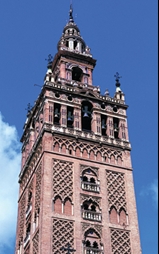A Merger of Cultures 2012-03-23
How a historic structure from 12th- and 13th-century Europe came to Kansas City in the 20th century.
The Aga Khan, spiritual leader of the world’s Shia Imami Ismaili Muslims, may have seemed an unusual choice to receive the 2011 J.C. Nichols Prize for Visionaries in Urban Development (“His Highness the Aga Khan, 2011 Laureate, ULI J.C. Nichols Prize for Visionaries in Urban Development“). It was his work leading a vast development network that is improving the lives of impoverished people in more than 30 countries that attracted the attention of the Nichols jury. But a remarkable coincidence, discovered only on the day the prize was awarded in October, links the Aga Khan with J.C. Nichols, one of ULI’s founders.
Shortly before the award presentation at ULI’s Fall Meeting in Los Angeles, Nichols’s grandson Wayne Nichols and his wife, Susan shared coffee with Luis Monreal, general manager of the Aga Khan Trust for Culture, who accepted the prize on behalf of the Aga Khan. Monreal, a native of Seville, Spain, asked Nichols how Seville’s famous architectural landmark the Giralda (which happens to be a favorite of the Aga Khan) came to be etched in glass on the J.C. Nichols Prize itself.
Monreal explained that the Giralda is a 12th-century minaret that, in the 13th century, was converted to a bell tower for the Seville Cathedral. The bottom two-thirds of the current bell tower was part of the original minaret, atop which Seville’s Christians placed a late Renaissance baroque structure. That same image is reproduced near the fountain anchoring J.C. Nichols’s most prominent work—Country Club Plaza in Kansas City, Missouri—and is portrayed on the Nichols Prize. Monreal spoke excitedly about the design of the minaret, which was modeled after the Qutubiya minaret in Marrakech, Morocco. Qutubiya translates as “Tower of the Book,” Monreal said.
Nichols explained that his grandfather was heavily influenced by his travels in Europe when he designed the plaza. “My grandfather designed it; my uncle completed it,” Nichols told Monreal.
Both men seemed to be delighted by the discovery. “It is a coincidence of destiny,” Monreal said. “This represents my country, one culture on top of another! It is a masterpiece, a perfect example of a merger of cultures.”
- 1737 reads
 Ismaili.NET - Heritage F.I.E.L.D.
Ismaili.NET - Heritage F.I.E.L.D.